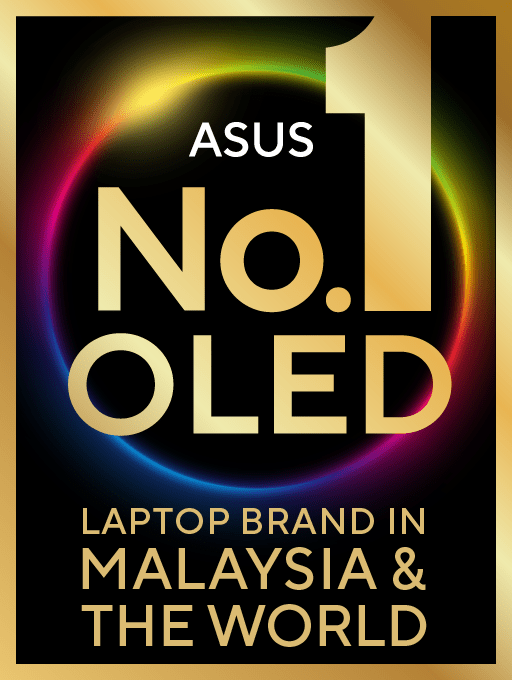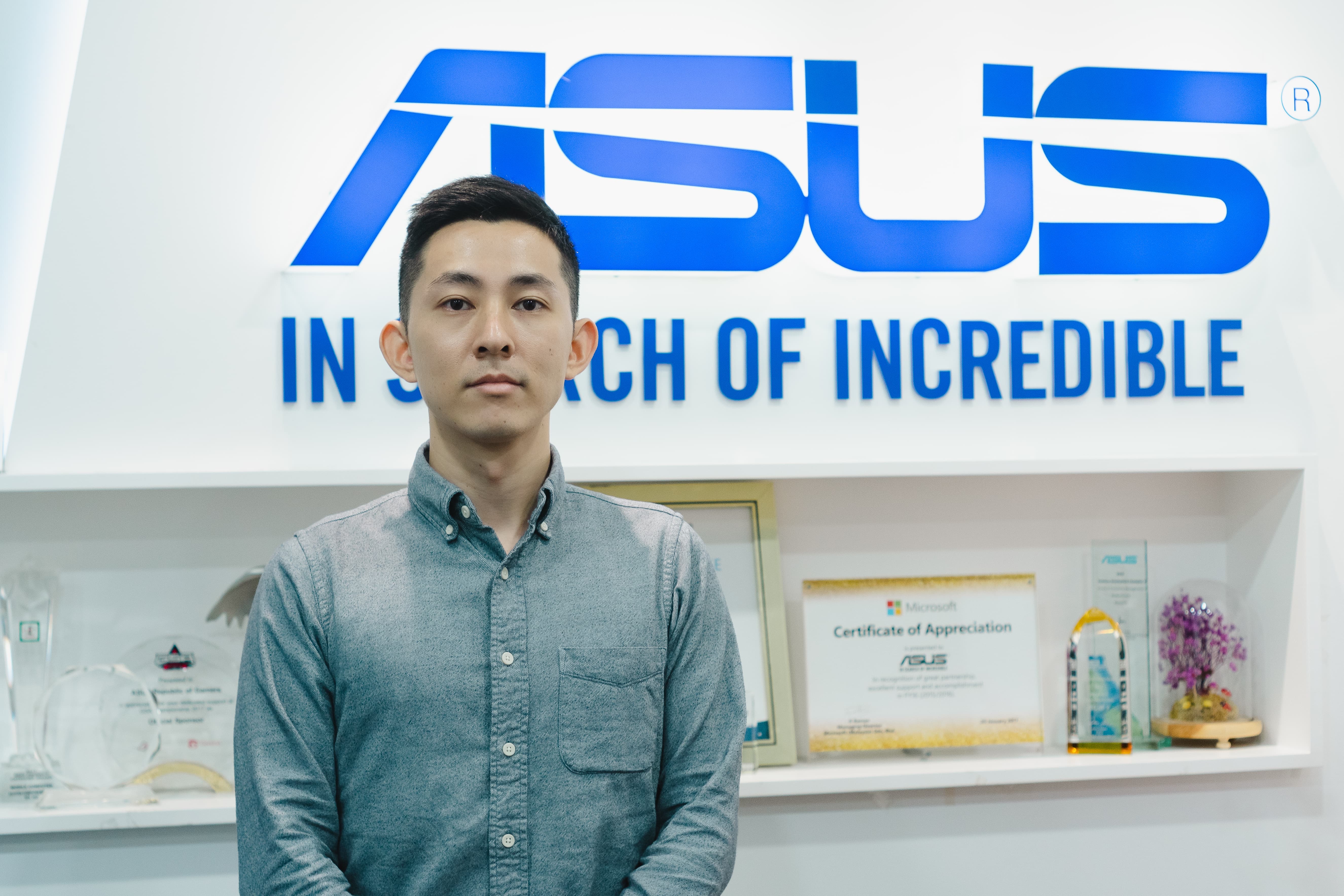Malaysian Business sits down with Lenny Lin, Business Development Manager, ASUS Malaysia to learn more about ASUS involvement in OLED technology, it’s rise in becoming the number one player in OLED laptop market share worldwide and Malaysia, and how innovative are ASUS OLED laptop range in the market today.
MB: What exactly is an OLED Laptop? How does it work?
Lenny: As you might be aware, most laptops use LCD panels. For ASUS OLED laptops, we use
OLED panels. It is probably a bit too long to explain the OLED technology here, but in short, with OLED, each pixel on your screen lights up individually, versus LCD which rely on backlighting.
MB: What are some of the benefits of using OLED Laptops? How different it is from LCD or LED displays?
Lenny: To start off, LCD and LED displays are practically the same. The industry just decided to use the name “LED display” to denote that the panel uses a LED backlight instead of the older CCFL backlight technology. The main mechanism in LCDs is the liquid crystals themselves – they essentially block the backlight to varying degrees, giving you the colours you see on your display.
When it comes to OLED, we do not need backlighting, as the OLED material is self-luminous. Each pixel can be turned on or off individually, and that brings us the first benefit of ASUS OLED, which is true black. Only with OLED panels, you can get the deepest blacks, as the areas on your screen that are displaying black are turned off.
We also have the best-in-class colour gamut, with every ASUS OLED display capable of 100% DCI-P3 for the most vivid colours you have seen. And we maintain colour accuracy at all brightness levels, thanks to the way that OLEDs work, unlike LCDs which are generally accurate at a specific brightness due to their reliance on backlighting.
Fast-paced scenes will also look sharper on OLED laptops due to the super-fast 0.2ms response times. But more importantly, all ASUS OLED displays output 70% less harmful blue light than LCD panels due to the nature of the panel itself, thus preventing eye damage and discomfort, which is great for everyone, but particularly important for younger users.
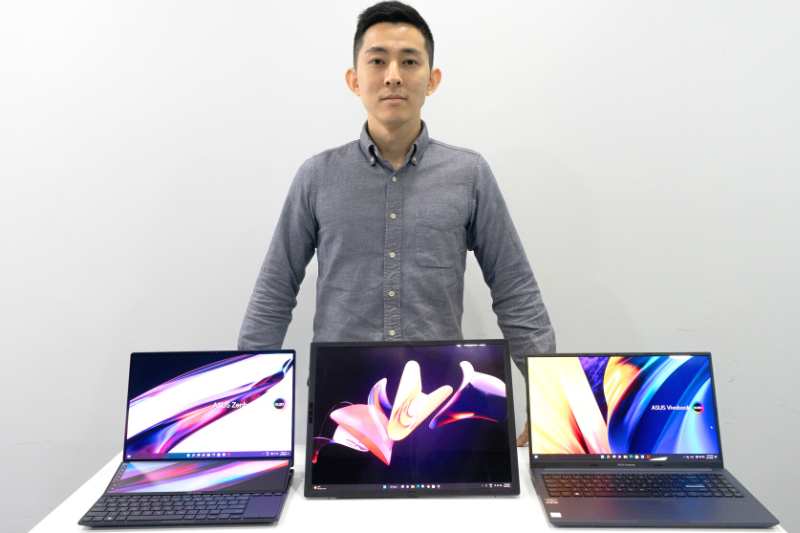
MB: Are OLED laptops more expensive than LCD ones? Do you foresee OLED display tech to be cheaper as time goes?
Lenny: The price difference varies by system configuration, also the prices of LCD and OLED panels themselves may differ depending on sizes, resolution and other specifications. As OLED displays provide better user experience in many aspects, we cannot compare the two types of panels only by the price.
And yes, we do believe that OLED tech will be more affordable in the future as the technology matures. In fact you can see it from our ASUS OLED line up. While we could only include ASUS OLED in the premium price bracket a few years ago, you can see that we now have more affordable ASUS OLED options like the ASUS Vivobook 15X OLED that starts at just RM3,299. And we will continue to work to bring ASUS OLED to more people.
MB: Coming from ASUS, whom will be company’s specific target consumer market on ASUS laptop series that comes with OLED displays?
Lenny: ASUS OLED is designed for everyone, as we believe that everyone can benefit from the low blue light emissions, high power efficiency, vivid and accurate colours, high contrast and fast response time. And that’s why we have a wide range of ASUS OLED offerings across all price segments.
But if you want me to pinpoint a specific target market, that would be content creators. Content creators have the most to gain from OLED displays. The wide colour gamut, colour accuracy and high dynamic range of our displays allow them to see their work as it should be seen. As such, we have designed ASUS OLED offerings with creator-centric features like the ASUS Dial and ScreenPad Plus to optimize their workflow.
MB: How long has ASUS been manufacturing and doing marketing on OLED laptops?
Lenny: Our first ASUS OLED laptop was the ASUS Zenbook Pro Duo (UX581), which we launched back in 2019. That was also the first laptop to feature the ScreenPad Plus I mentioned earlier.
MB: How has the response been so far, especially in the Malaysia market?
Lenny: We are proud to say that we spearheaded the OLED laptop trend in Malaysia with our full ASUS OLED range, and we currently have a really dominant lead in the industry. I believe as more people experience ASUS OLED for themselves, they will invariably end up hooked to the superior visual experience of ASUS OLED.
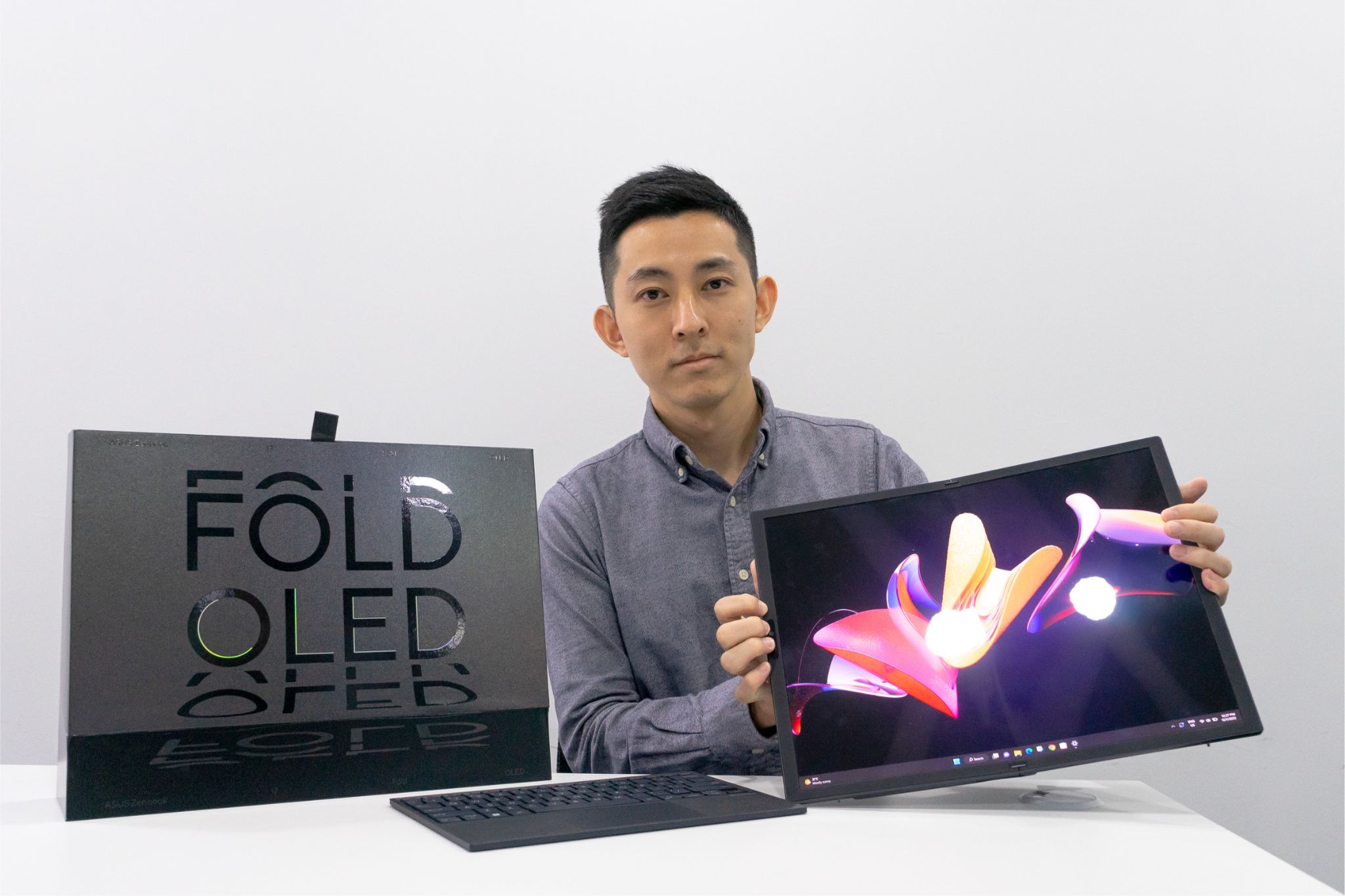
MB: With that said, what makes ASUS OLED laptops different from other makers?
Lenny: We work closely with our OLED panel providers to fine-tune the panels to their limits. We managed to launch the industry-first VESA DisplayHDR 600 True Black OLED, meaning the peak brightness for HDR content reaches 600 nits, with incredible contrast that only comes with OLED panels. This panel is found on a few of our models including the Zenbook Pro Duo and Studiobook models.
We also proactively minimize the possibility of OLED burn-in. With our OLED Care technology built into the MyASUS app, it maximizes the lifespan of our OLEDs. We use pixel shift technology, pixel refresh screensaver to prevent burn-in and also a focus mode, which will dim the areas around the active window to not just lower power consumption but also prevent burn-in.
Another commonly mentioned drawback of OLED display is PWM dimming which can cause discomfort for users sensitive to flicker. Our displays all feature flicker-free DC dimming, with MyASUS providing options to allow users to still enjoy the benefits of DC dimming at lower brightness levels than purely hardware-based DC dimming can deliver.
In short, ASUS OLED is not just about the OLED display panel, but also the other features that we built around the display to deliver the best experience for our users. Our laptops have their own unique, productivity-boosting features like what I mentioned earlier, like the ASUS Dial of the Studiobook Pro, the second display of the Zenbook Duo series, and the DialPad of the Vivobook Pro series. This is in addition to their high build quality and class leading designs, on top of the fantastic displays.
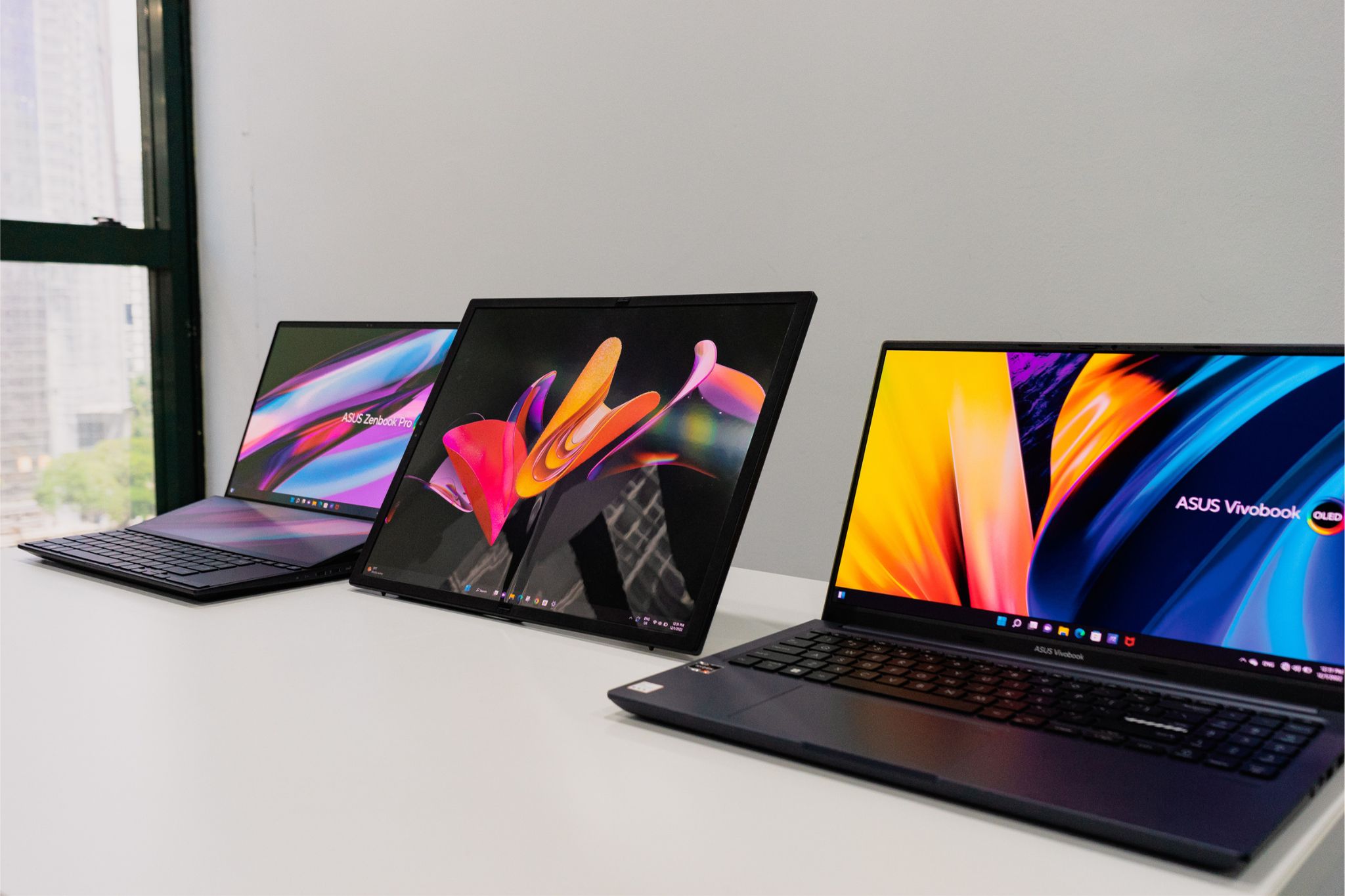
MB: Could you share with us on ASUS Laptops growth to date – especially on your OLED line-ups?
Lenny: Just comparing 2022 vs 2023, we have experienced a 50% growth in terms of ASUS OLED laptops sold in Malaysia. We are currently enjoying a very dominant leadership position in terms of OLED laptops, not just in Malaysia, but also worldwide, and we are confident that ASUS will continue to be the No.1 OLED laptop brand for 2023 thanks to our continuous innovation.
MB: What about the projected growth in, say, 2023?
Lenny: For 2023, our goal for ASUS OLED would be to increase the percentage of ASUS OLED laptops sold versus our non-OLED offerings, from around 20% this year, to at least 25% in 2023.

MB: Do you see any new technological upgrades by ASUS on laptops in the near future?
Lenny: Of course. At ASUS, we are always in search of incredible. We are always working towards enabling new experiences for our users. I don’t want to spoil any surprises, but do stay tuned to our CES 2023 announcements.
MB: Any newer display technology by ASUS – on top of OLED laptops?
Lenny: Just earlier this year we unveiled the Zenbook 17 Fold OLED, featuring a foldable OLED display. And I can tell you that the innovations and advancements won’t end there. Once again, I can’t share what we haven’t announced, but I can give you a hint – keep an eye on our CES 2023 announcements for the next big thing from ASUS.
MB: Can you share with us some of the top selling OLED laptop model(s) and why it (they) has been popular?
Lenny: Our bestseller would be the Vivobook 15X OLED (M1503) that we announced recently. It’s very popular thanks to its impressive value proposition – the advanced 120Hz OLED display which delivers not just great colours, but also lets you experience a really smooth visual experience that rivals even the best gaming laptop displays out there. We also paired it up with a powerful gaming-grade AMD Ryzen 5000 Hseries CPU, that’s quite uncommon in its price segment.

MB: Can you list the range of ASUS OLED models from most affordable to expensive.
Lenny: Wow, that would be quite extensive! I definitely won’t go through every one of our ASUS OLED models, but here are some of the highlights. So all the way at the value segment we have the ASUS Vivobook 15 (K513) that starts from RM2,299. Our latest premium mainstream entry that offers fantastic value for money is the ASUS Vivobook 15X OLED, priced at RM3,299.
After that we have a wide range of ASUS Zenbooks that start from RM3,499 for the Zenbook 13 OLED, all the way up to the Zenbook Pro 15 Duo OLED that is priced at RM14,999. Not forgetting our ASUS Zenbook 17 Fold OLED that’s priced at RM14,999 as well, the world’s first 17” Foldable OLED laptop.
For the pro creators, we have the ProArt Studiobook 16 OLED series that start from RM9,999 to RM16,999. These are the ones that feature the intuitive ASUS Dial to enhance content creators’ workflows. So you can say that we have everything from as low as RM2,499 to RM16,999. It really depends on what you want to do with your laptop, and we will have an ASUS OLED laptop for you.

MB: In terms of promotion, can you share with us any in-country promotions or education efforts that ASUS Malaysia will be undertaking?
Lenny: I believe most people know what OLED is about, as it is so widely available in smartphones. But many people might not have experienced it in a laptop. We have been working continuously to educate users on the key benefits of ASUS OLED like the low blue light, vivid and accurate colours.
That’s on the education end, and we are also working closely with our resellers and partners to ensure that users can walk in to an ASUS store and experience ASUS OLED for themselves. After all, the moment you see an ASUS OLED screen, I believe you will be thoroughly impressed.
MB: What steps ASUS is taking to debunk the believe that OLED Laptop is not as reliable than the LCD laptop?
Lenny: While OLEDs are more vulnerable to “burn in” than LCDs in theory, the issue is in reality very rare and most users will not experience this throughout the lifespan of their OLED laptops. TVs with similar OLED technology have been on the market for several years and have been selling very well and providing their users with OLED benefits mentioned above.
However, to further assure the prevention of burn in issues, our OLED laptops have a set of ASUS-developed burn in protection software called ASUS OLED Care, as well as some Windows settings enabled by default.
Native Windows settings that also help to avoid burn in issues will be enabled by default: Dark mode, Semi-transparent Task Bar, Auto-hide Task Bar when not in use, and turn-off screen when idle for a while. Note: these practices are good for ALL displays, not just OLED.
MB: Can you share what kind of after-sales support is ASUS providing?
Lenny: We provide the same standard aftersales support for ASUS OLED laptops as we do for our non-OLED offerings. It’s the same excellent 2-year global warranty with one year Perfect Warranty.
Perfect Warranty provides for additional peace of mind by covering accidental damage arising from liquid spills or electrical surges. ASUS will cover 80% of the cost of the damaged key component, with the end user only having to pay 20% of the cost of the part and the labour fees.
